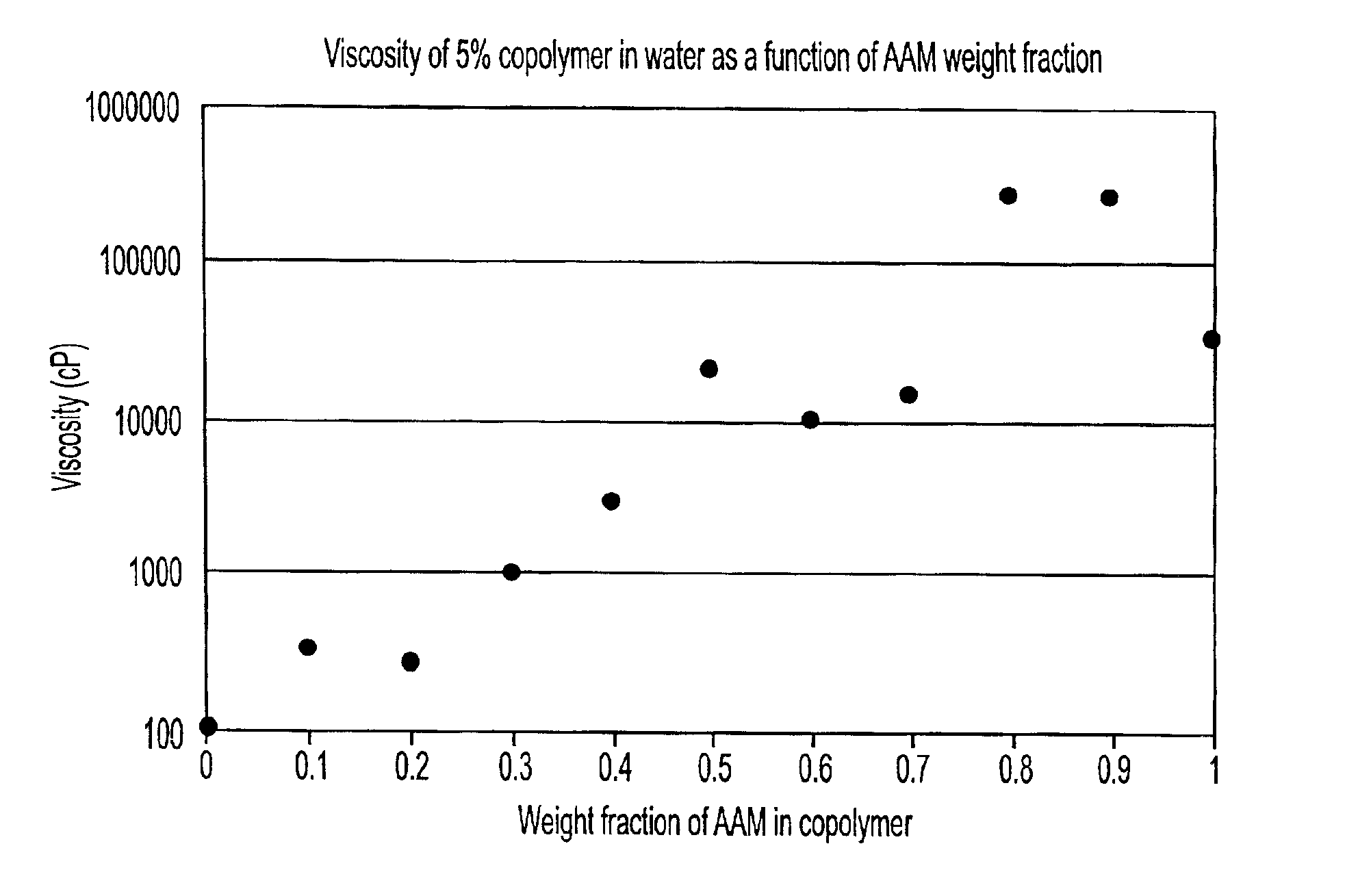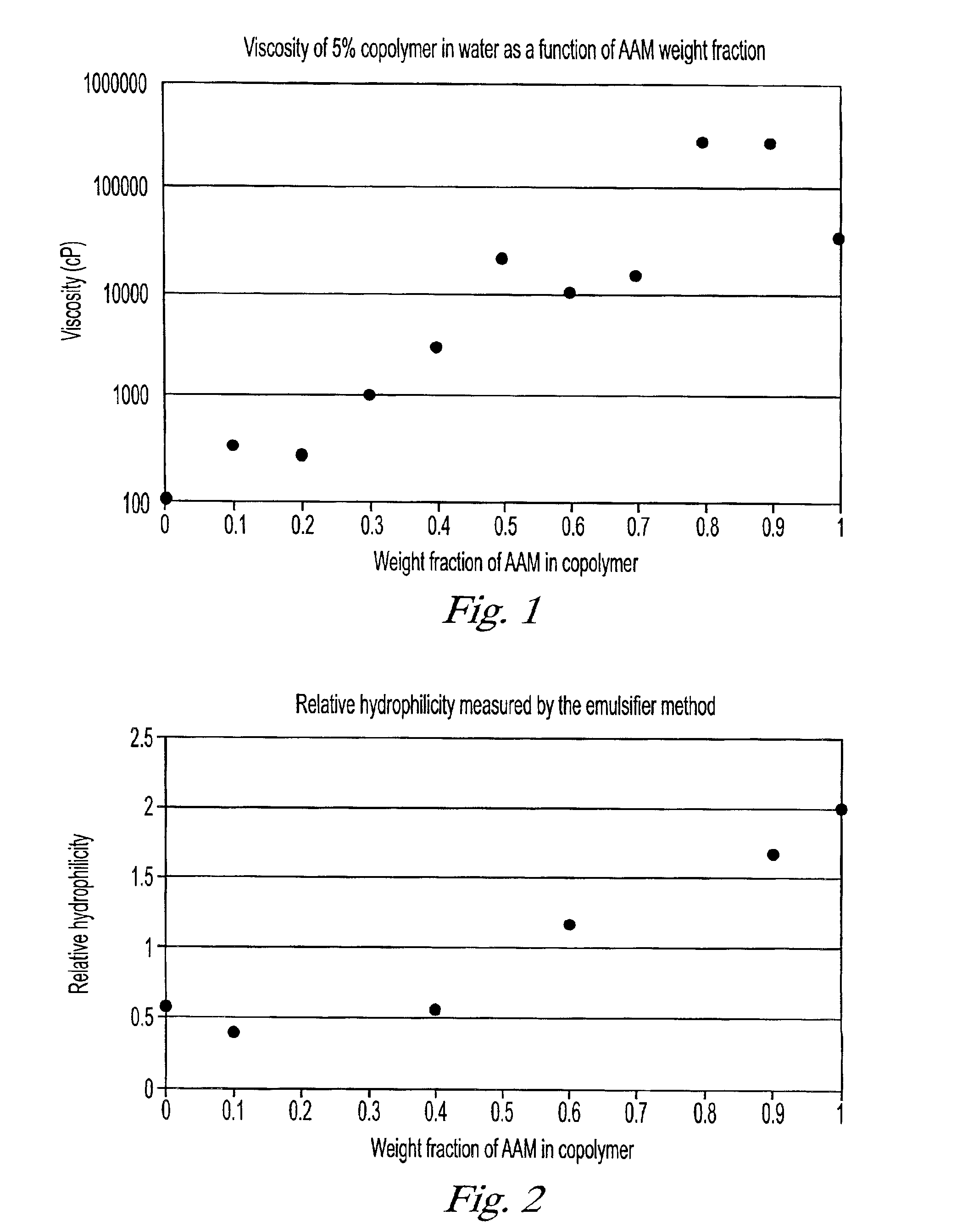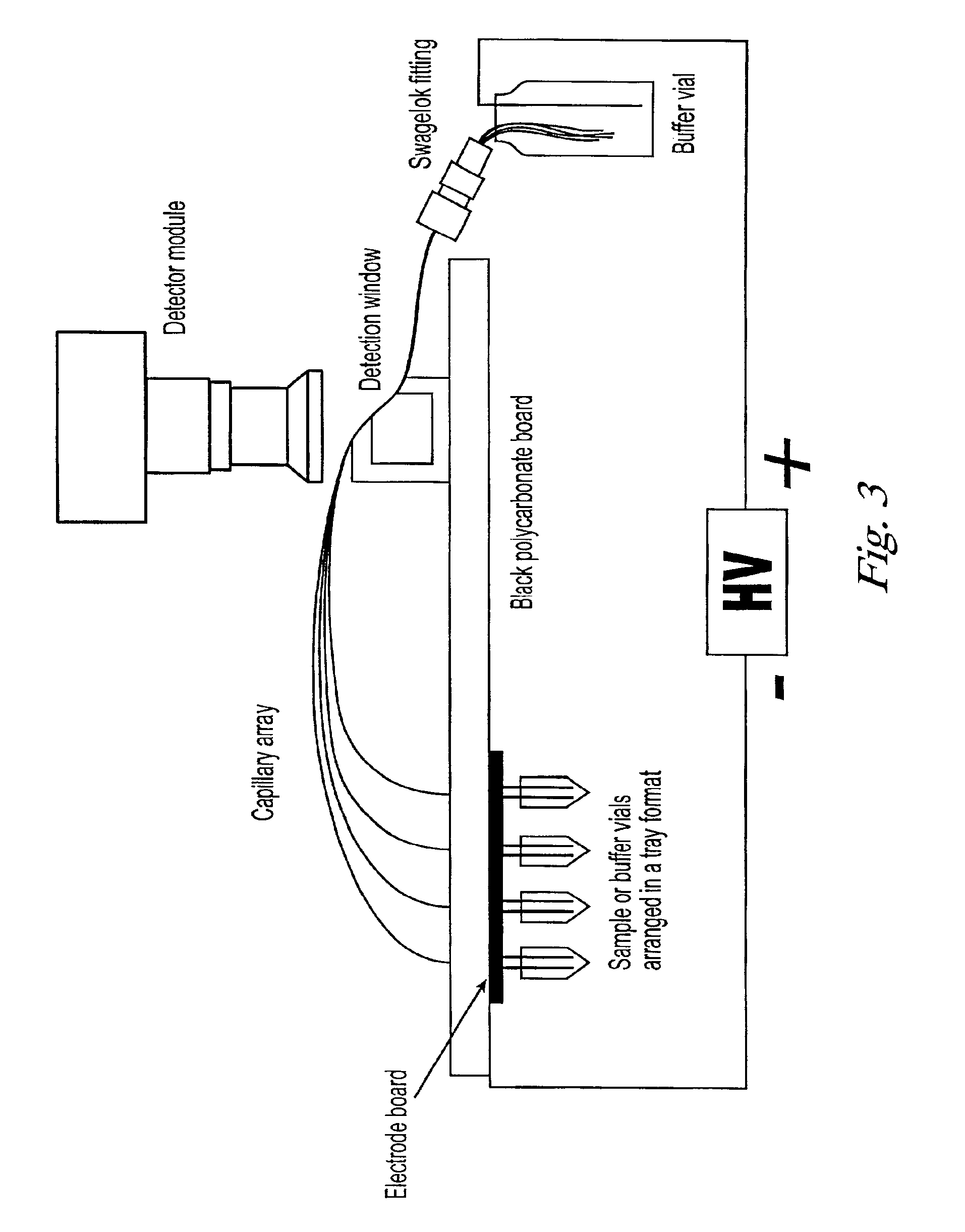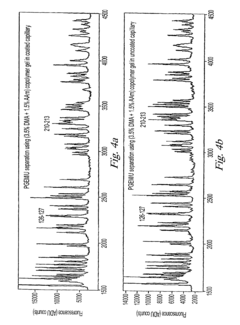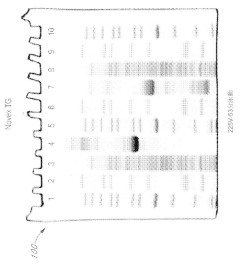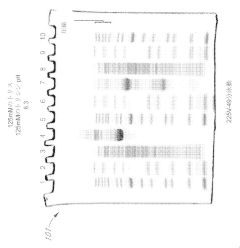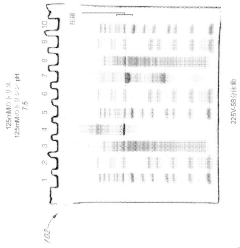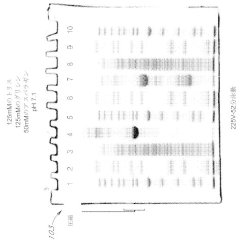How to Utilize Advanced Polymers in Gel Electrophoresis?
Polymer Gel Evolution
The evolution of polymer gels in gel electrophoresis represents a significant advancement in molecular biology and biochemistry. Initially, starch gels were used for electrophoresis in the 1950s, but they were quickly replaced by polyacrylamide gels due to their superior resolution and reproducibility. Polyacrylamide gels, formed by the polymerization of acrylamide monomers, became the standard for protein separation and analysis.
In the 1970s, agarose gels emerged as a preferred medium for DNA separation, especially for larger fragments. Agarose, a polysaccharide extracted from seaweed, offered a larger pore size suitable for DNA molecules. This development greatly facilitated the analysis of genetic material and played a crucial role in the advancement of molecular biology techniques.
The 1980s saw the introduction of pulsed-field gel electrophoresis (PFGE), which utilized specialized agarose gels and alternating electric fields to separate large DNA molecules, including entire chromosomes. This technique revolutionized genomic studies and bacterial typing methods.
As research demands grew more sophisticated, the 1990s and early 2000s witnessed the development of gradient gels. These gels feature a gradual change in polymer concentration, allowing for the separation of a wider range of molecule sizes in a single run. Gradient gels significantly improved the resolution and efficiency of protein and nucleic acid separations.
The turn of the millennium brought about the advent of microfluidic gel electrophoresis systems. These miniaturized platforms incorporated advanced polymer formulations to achieve rapid and high-resolution separations with minimal sample volumes. The integration of microfluidics with gel electrophoresis opened new possibilities for point-of-care diagnostics and high-throughput screening applications.
Recent years have seen the emergence of "smart" polymer gels that respond to external stimuli such as temperature, pH, or light. These responsive gels offer dynamic control over separation parameters, enabling more precise and adaptable electrophoresis protocols. Additionally, the incorporation of nanomaterials into polymer gels has led to enhanced separation capabilities and the ability to detect and analyze smaller biomolecules.
The ongoing evolution of polymer gels in electrophoresis continues to focus on improving resolution, speed, and sensitivity. Current research explores the potential of novel synthetic polymers and hybrid materials that combine the benefits of different gel types. These advancements aim to address the growing demands in proteomics, genomics, and other fields requiring high-performance biomolecule separation and analysis.
Market Analysis
The market for advanced polymers in gel electrophoresis is experiencing significant growth, driven by the increasing demand for more efficient and precise separation techniques in molecular biology and biochemistry research. The global gel electrophoresis market, which includes both traditional and advanced polymer-based systems, is projected to reach substantial value in the coming years, with a notable compound annual growth rate.
Advanced polymers are gaining traction in gel electrophoresis due to their superior performance characteristics compared to traditional agarose or polyacrylamide gels. These polymers offer enhanced resolution, faster separation times, and improved sensitivity, making them particularly attractive for applications in genomics, proteomics, and clinical diagnostics. The market demand is primarily fueled by academic and research institutions, biotechnology companies, and pharmaceutical laboratories seeking to optimize their analytical processes.
The adoption of advanced polymers in gel electrophoresis is closely tied to the broader trends in life sciences research and personalized medicine. As the focus on precision medicine and targeted therapies intensifies, there is a growing need for more sophisticated separation techniques that can handle complex biological samples with high accuracy. This trend is expected to drive continued innovation in polymer-based gel electrophoresis systems and consumables.
Geographically, North America and Europe currently dominate the market for advanced polymer-based gel electrophoresis products, owing to their well-established research infrastructure and higher R&D spending. However, the Asia-Pacific region is emerging as a rapidly growing market, driven by increasing investments in life sciences research and the expansion of biotechnology and pharmaceutical industries in countries like China and India.
The market landscape is characterized by a mix of established players and innovative start-ups. Major life sciences companies are investing in the development of proprietary advanced polymer formulations for gel electrophoresis, while specialized biotechnology firms are focusing on niche applications and custom solutions. This competitive environment is fostering continuous innovation and product improvements, further driving market growth.
Despite the positive outlook, the market faces certain challenges. The high cost of advanced polymer-based systems compared to traditional gel electrophoresis methods may limit adoption in budget-constrained laboratories. Additionally, the need for specialized training and potential workflow changes can pose barriers to widespread implementation. However, as the technology matures and economies of scale are achieved, these barriers are expected to diminish over time.
In conclusion, the market for advanced polymers in gel electrophoresis presents significant opportunities for growth and innovation. The increasing demand for high-performance separation techniques in life sciences research, coupled with ongoing technological advancements, is expected to drive sustained market expansion in the coming years.
Technical Challenges
Gel electrophoresis, a fundamental technique in molecular biology, faces several technical challenges when incorporating advanced polymers. One of the primary issues is achieving optimal separation resolution while maintaining the structural integrity of the gel matrix. Advanced polymers, such as high-performance acrylamide derivatives or novel cross-linking agents, often exhibit complex interactions with biomolecules, potentially affecting their migration patterns and overall separation efficiency.
Another significant challenge lies in the development of polymers that can withstand higher electric field strengths without compromising gel stability. As researchers push the boundaries of separation speed and resolution, traditional polymer matrices may suffer from increased Joule heating and subsequent gel deformation. This necessitates the design of thermally stable and mechanically robust polymer networks that can maintain their structure under extreme conditions.
The compatibility of advanced polymers with various detection methods poses an additional hurdle. Many cutting-edge polymers may interfere with fluorescence-based detection systems or mass spectrometry analysis, limiting their applicability in certain experimental setups. Researchers must carefully balance the enhanced separation properties of these polymers with their potential impact on downstream analytical processes.
Reproducibility and standardization present ongoing challenges in the utilization of advanced polymers for gel electrophoresis. The complex nature of these materials often leads to batch-to-batch variations, making it difficult to achieve consistent results across different laboratories or experimental runs. Developing robust quality control measures and standardized production protocols for these advanced polymers is crucial for their widespread adoption in research and clinical settings.
The cost and scalability of producing advanced polymers for gel electrophoresis also remain significant obstacles. Many high-performance materials require sophisticated synthesis methods or expensive precursors, limiting their accessibility to a broader scientific community. Bridging the gap between laboratory-scale production and industrial-scale manufacturing of these polymers is essential for their integration into routine analytical workflows.
Environmental concerns and regulatory compliance add another layer of complexity to the development and implementation of advanced polymers in gel electrophoresis. As the scientific community becomes increasingly aware of the environmental impact of laboratory practices, there is a growing need for biodegradable or easily recyclable polymer matrices that do not compromise separation performance.
Lastly, the integration of advanced polymers with emerging technologies, such as microfluidic devices or 3D-printed gel matrices, presents both opportunities and challenges. Adapting these polymers to new fabrication techniques and miniaturized formats requires careful consideration of their physical and chemical properties, as well as their interactions with various substrate materials and biomolecules.
Current Solutions
01 Synthesis of advanced polymers
Advanced polymer synthesis involves developing new monomers and polymerization techniques to create materials with enhanced properties. These methods can produce polymers with improved thermal stability, mechanical strength, or specific functionalities for various applications.- Synthesis of advanced polymers: Advanced polymer synthesis techniques involve creating new polymer structures with enhanced properties. These methods may include controlled polymerization, copolymerization, or the use of novel monomers to produce polymers with specific characteristics such as improved thermal stability, mechanical strength, or chemical resistance.
- Polymer applications in electronics: Advanced polymers are increasingly used in electronic applications, including flexible displays, sensors, and memory devices. These polymers offer advantages such as lightweight construction, flexibility, and potential for large-area fabrication, making them suitable for next-generation electronic devices.
- Biodegradable and sustainable polymers: Development of advanced biodegradable and sustainable polymers is a growing field, focusing on creating materials that have reduced environmental impact while maintaining desirable properties. These polymers may be derived from renewable resources or designed to degrade safely in the environment after use.
- Polymer nanocomposites: Advanced polymer nanocomposites combine polymers with nanoscale fillers to create materials with enhanced properties. These nanocomposites can exhibit improved mechanical, thermal, electrical, or barrier properties compared to traditional polymers, opening up new applications in various industries.
- Smart and responsive polymers: Smart and responsive polymers are advanced materials that can change their properties in response to external stimuli such as temperature, pH, light, or electric fields. These polymers have potential applications in drug delivery, tissue engineering, and adaptive materials for various industries.
02 Polymer composites and blends
Creating advanced polymer composites and blends involves combining different polymers or incorporating additives to achieve superior performance. These materials can exhibit enhanced mechanical, thermal, or electrical properties compared to individual components.Expand Specific Solutions03 Smart and responsive polymers
Development of smart and responsive polymers that can change their properties in response to external stimuli such as temperature, pH, or light. These materials have potential applications in drug delivery, sensors, and adaptive structures.Expand Specific Solutions04 Biodegradable and sustainable polymers
Research into biodegradable and sustainable polymers focuses on developing materials that can decompose naturally or be derived from renewable resources. These polymers aim to reduce environmental impact and promote sustainability in various industries.Expand Specific Solutions05 Polymer processing and manufacturing techniques
Advancements in polymer processing and manufacturing techniques, including 3D printing, electrospinning, and precision molding. These methods enable the production of complex polymer structures and improve the efficiency of polymer-based product manufacturing.Expand Specific Solutions
Industry Leaders
The advanced polymer gel electrophoresis market is in a growth phase, driven by increasing demand in genomics and proteomics research. The global market size is expanding, with projections indicating significant growth in the coming years. Technologically, the field is evolving rapidly, with companies like Life Technologies Corp. and Applied Biosystems LLC leading innovation. These firms, along with others such as LG Chem Ltd. and Sharp Corp., are developing more efficient and precise electrophoresis systems. Academic institutions like Sichuan University and Northwestern University are contributing to advancements in polymer chemistry and separation techniques. The competitive landscape is characterized by a mix of established players and emerging startups, with ongoing research focused on improving resolution, speed, and automation in gel electrophoresis processes.
Life Technologies Corp.
Centre National de la Recherche Scientifique
Key Innovations
- A random, linear copolymer gel matrix is developed by combining a primary acrylamide or acrylamide derivative with a secondary comonomer, strategically copolymerized to optimize physical, chemical, and sieving properties, including hydrophilicity, viscosity, and self-coating properties, to enhance separation performance in both coated and uncoated capillaries.
- Formulations of polyacrylamide gels with a near-neutral pH (6.5 to 7.5) using gel amine buffers, primary gel ampholytes, and conjugated gel ampholytes such as threonine and serine, which maintain gel stability and improve separation efficiency.
Regulatory Compliance
Regulatory compliance is a critical aspect of utilizing advanced polymers in gel electrophoresis, particularly in the context of biomedical research and clinical applications. The use of these materials is subject to stringent oversight by various regulatory bodies to ensure safety, efficacy, and ethical considerations are met.
In the United States, the Food and Drug Administration (FDA) plays a pivotal role in regulating the use of advanced polymers in gel electrophoresis when applied to medical devices or diagnostic tools. Manufacturers must adhere to the FDA's Quality System Regulation (QSR) and obtain premarket approval or clearance for their products. This process often involves extensive documentation, including risk assessments, performance data, and biocompatibility studies specific to the advanced polymers used.
The European Union's regulatory framework, governed by the Medical Device Regulation (MDR) and In Vitro Diagnostic Regulation (IVDR), imposes similar requirements for products utilizing advanced polymers in gel electrophoresis. Compliance with these regulations necessitates thorough technical documentation, clinical evaluation reports, and post-market surveillance plans.
Environmental considerations are also paramount in regulatory compliance. The Registration, Evaluation, Authorization, and Restriction of Chemicals (REACH) regulation in the EU and similar regulations worldwide mandate the assessment and registration of chemical substances, including advanced polymers, to mitigate potential environmental and health risks.
Researchers and manufacturers must also comply with Good Laboratory Practice (GLP) and Good Manufacturing Practice (GMP) standards to ensure the reliability and reproducibility of results obtained through gel electrophoresis using advanced polymers. These practices encompass rigorous quality control measures, standardized protocols, and comprehensive record-keeping.
Ethical considerations in research involving human or animal subjects add another layer of regulatory compliance. Institutional Review Boards (IRBs) or Ethics Committees must approve studies utilizing advanced polymers in gel electrophoresis, particularly when applied to clinical diagnostics or therapeutic development.
As the field of advanced polymers in gel electrophoresis continues to evolve, regulatory bodies are adapting their frameworks to address emerging technologies. This includes the development of new guidance documents and standards specific to novel polymer applications. Staying abreast of these regulatory changes is crucial for researchers and manufacturers to maintain compliance and ensure the successful development and commercialization of innovative gel electrophoresis technologies.
Environmental Impact
The utilization of advanced polymers in gel electrophoresis has significant environmental implications that warrant careful consideration. Traditional gel electrophoresis methods often rely on acrylamide, a neurotoxic substance that poses risks to both human health and the environment. Advanced polymers offer potential alternatives that can mitigate these concerns while maintaining or even enhancing the efficiency and resolution of electrophoretic separations.
One of the primary environmental benefits of using advanced polymers is the reduction of hazardous waste. Many of these polymers are biodegradable or can be easily recycled, significantly decreasing the environmental footprint of laboratory procedures. For instance, some novel hydrogel-based systems can be dissolved and safely disposed of without the need for specialized waste management protocols, which are typically required for acrylamide gels.
Furthermore, advanced polymers often enable the development of more compact and efficient electrophoresis systems. This miniaturization trend leads to reduced consumption of reagents and buffers, thereby minimizing chemical waste and conserving resources. Additionally, some polymer-based gels can be reused multiple times, further reducing the overall material consumption and waste generation associated with electrophoresis experiments.
The production processes for advanced polymers used in gel electrophoresis are generally less energy-intensive compared to traditional gel materials. This translates to lower carbon emissions and reduced environmental impact throughout the supply chain. Moreover, many of these polymers can be synthesized from renewable resources, aligning with principles of green chemistry and sustainability.
Advanced polymers also contribute to improved laboratory safety, which indirectly benefits the environment by reducing the risk of accidental spills or releases of hazardous materials. The non-toxic nature of many of these polymers means that even in the event of an accident, the environmental consequences would be significantly less severe compared to incidents involving traditional gel materials.
In terms of long-term environmental impact, the use of advanced polymers in gel electrophoresis supports the broader trend towards more sustainable laboratory practices. As research institutions and biotechnology companies increasingly prioritize environmental responsibility, the adoption of these materials can serve as a model for other areas of scientific research and industrial applications.
However, it is important to note that the environmental benefits of advanced polymers must be balanced against potential drawbacks. For example, the production of some specialized polymers may involve complex synthesis processes that could have their own environmental implications. Additionally, the long-term effects of novel polymer materials on ecosystems, if released into the environment, are not yet fully understood and require ongoing research and monitoring.
